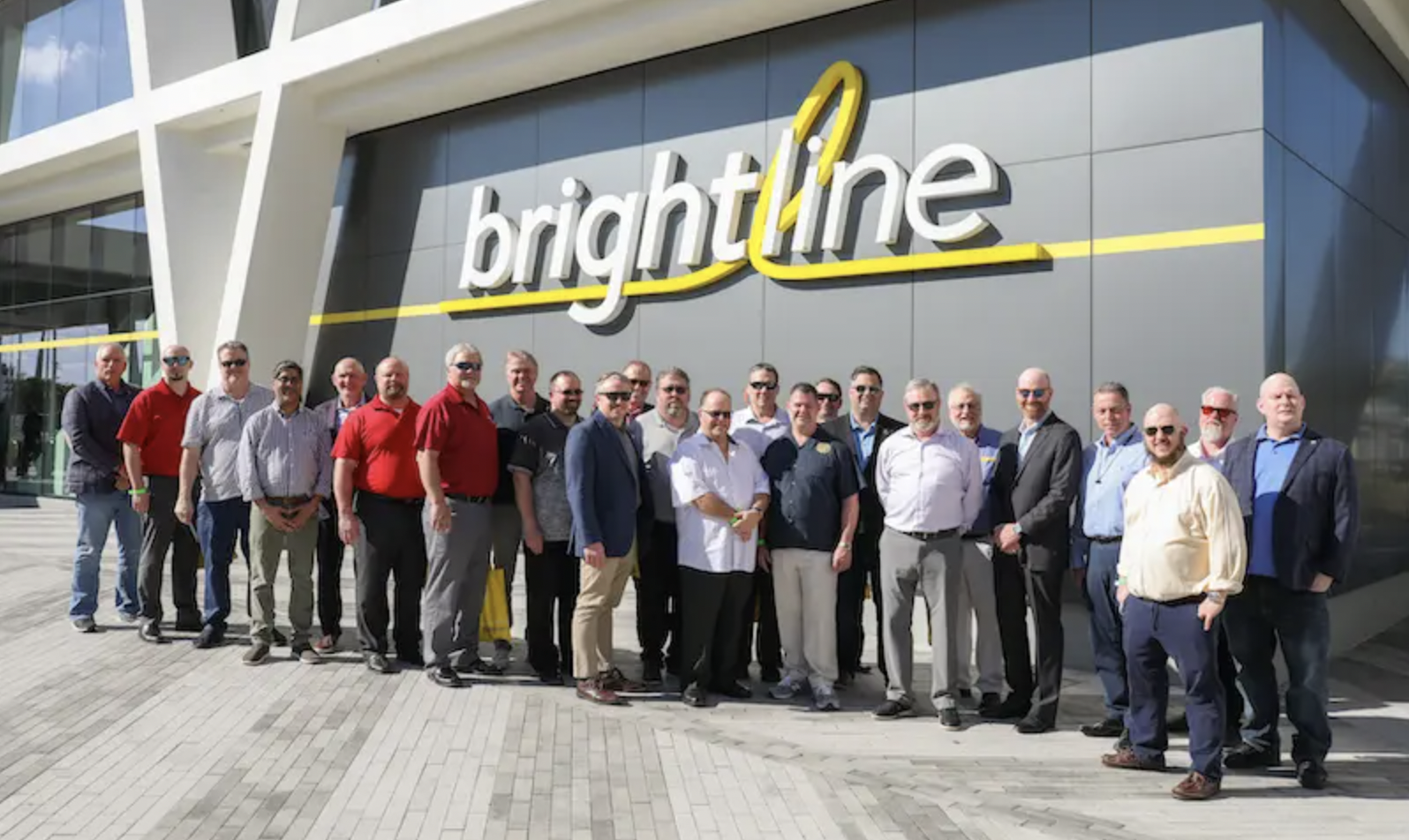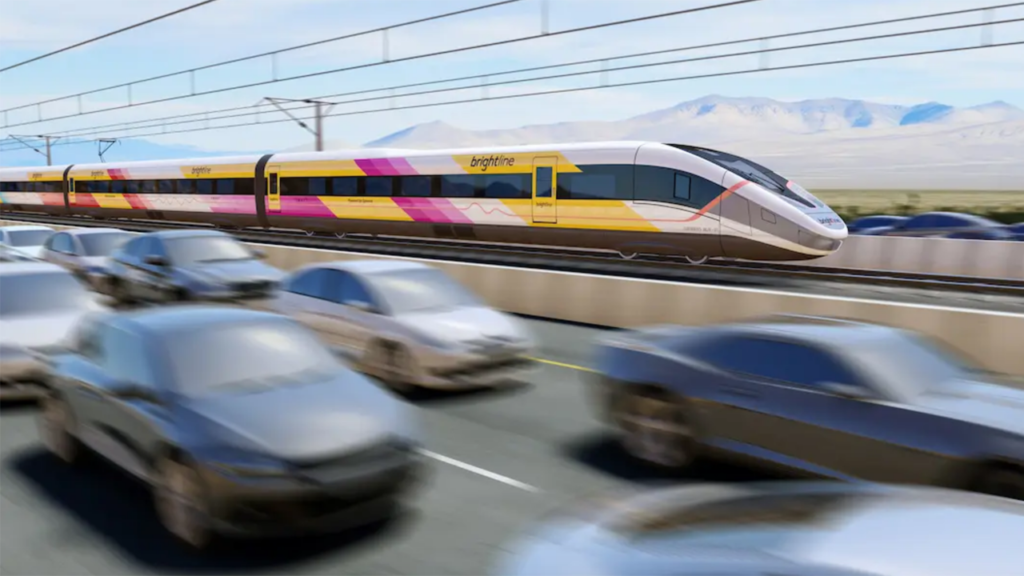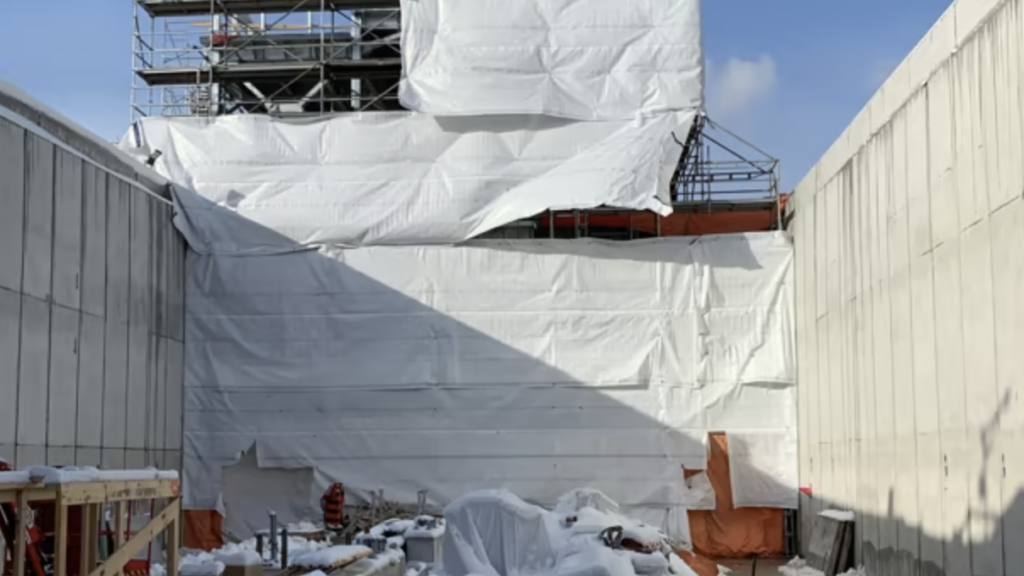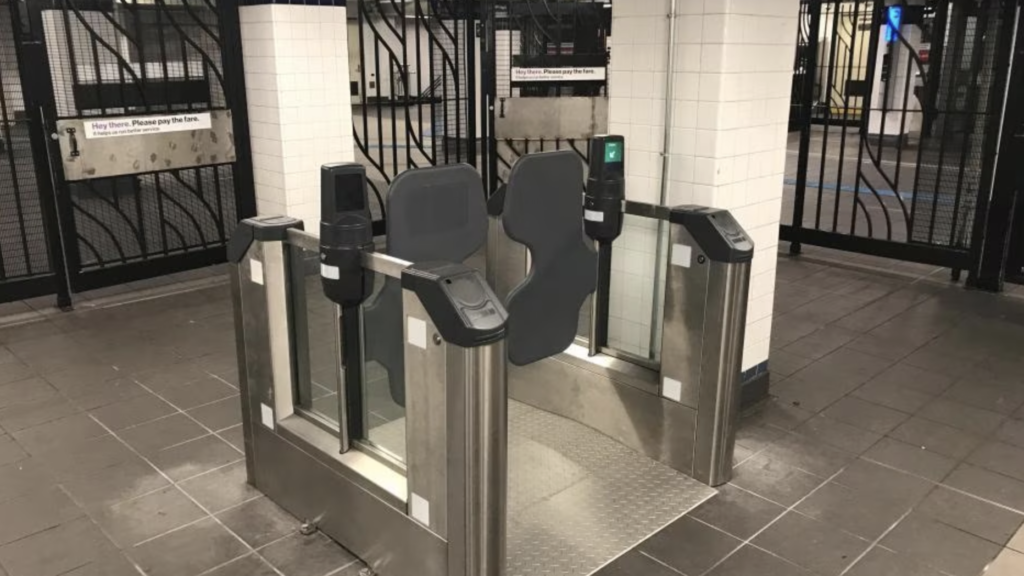
Transit Briefs: Brightline West, Metrolinx, NYMTA
Written by Marybeth Luczak, Executive Editor
Brightline West has inked a commitment with the High-Speed Rail Labor Coalition, which comprises 13 rail unions representing more than 160,000 freight, regional, commuter and passenger railroad workers in the United States. (Photograph Courtesy of Brightline West)
Brightline West supports using union labor for its planned 218-mile high-speed rail system connecting Las Vegas and Southern California. Also, Metrolinx provides updates the Finch West LRT’s Humber College Station and Toronto Union Station projects in Canada; and the New York Metropolitan Transportation Authority (MTA) will test “wide-aisle” fare gates.

Brightline West on Feb. 21 reported signing a memorandum of understanding with the High-Speed Rail Labor Coalition that establishes a commitment “for the use of highly skilled union labor in critical jobs required to operate and maintain” its $10 billion high-speed rail project. The coalition comprises 13 rail unions representing more than 160,000 freight, regional, commuter and passenger railroad workers in the United States.
The 218-mile project is slated to be built within Interstate 15 right-of-way and to offer stations near the iconic Las Vegas Strip and in Rancho Cucamonga, Apple Valley and Hesperia, Calif. Trains will be capable of speeds of up to 200 miles per hour, and the system is expected to create more than 1,000 permanent jobs once operational.
“Our nation’s first high-speed rail system will be operated and maintained by union labor, a statement of the strength of the American workforce,” said Mike Reininger, CEO of Brightline Holdings, which also runs Brightline, Florida’s private-sector passenger railroad. “As the most shovel-ready high-speed rail project in the United States, we are one step closer to leveling the playing field against transit and infrastructure projects around the world, and we are proud to be using America’s most skilled workers to get there.”
“The High-Speed Rail Labor Coalition is ready to bring this transformative transportation project to Americans,” the coalition said in a statement. “Let’s get to work.”
The High-Speed Rail Labor Coalition members include the Brotherhood of Maintenance of Way Employes Division; Brotherhood of Railroad Signalmen; International Association of Sheet Metal, Air, Rail and Transportation Workers-Mechanical and Engineering Department; National Conference of Firemen and Oilers 32BJ/SEIU; Transportation Communications Union; International Association of Machinists and Aerospace Workers; Brotherhood of Railway Carmen; International Brotherhood of Boilermakers; Transport Workers Union of America; American Train Dispatchers Association; International Association of Sheet Metal, Air, Rail and Transportation Workers-Transportation Department; Brotherhood of Locomotive Engineers and Trainmen; and International Brotherhood of Electrical Workers.
In related developments, the Federal Railroad Administration (FRA) in October 2022 released an environmental assessment of Brightline West’s proposed 49-mile Cajon Pass High-Speed Rail segment in California. The segment would link Victor Valley and Rancho Cucamonga. The project includes two new stations: one in Hesperia and one in Rancho Cucamonga. The connecting station in Victor Valley was approved as part of Brightline West’s separate 200-mile Las Vegas-to-Victorville project that was evaluated in the Final Environmental Impact Statement (Final EIS; FRA 2011).

Metrolinx on Feb. 18 reported that the Humber College Station on the Finch West Light Rail Transit (LRT) system has reached structural completion. Toronto Transit Commission’s Line 6 Finch West LRT has been under construction since 2019. It is a 11-kilometer, 18-station line with 16 surface stops, one below-grade stop, and an underground interchange station at the Finch West LRT station.
According to Metrolinx, crews have excavated to depths of up to 12 meters, poured 20,000 cubic meters of concrete, installed 650,000 kilograms of steel, and completed masonry work to form the skeleton of the Humber College Station, the line’s western terminus.
Various teams are now working throughout the station box and the north and south entrance buildings, tackling tasks like mechanical, electrical and plumbing installation. At the north entrance, tarps have been installed to insulate the unfinished building (see photograph above). At the south entrance, crews are installing wall tiling in washrooms and public areas.
The building façade is also progressing, according to Metrolinx, with aluminum cladding and the glass curtain wall ready for installation.
Additionally, the foundation for the 200-meter canopy is now being poured where a walkway will stretch from the station to Humber College campus, Metrolinx reported.
Separately, Metrolinx on Feb. 21 reported that work at Toronto’s Union Station is being completed to bring two-way, all-day rail service every 15 minutes or better along core segments of the GO network as part of the GO Expansion program. The latest improvements as part of the C$562 million Union Station Enhancement Project (USEP) are well under way and include:
- Wider GO train platforms with canopies and new tracks, which Metrolinx said “will improve the customer experience and allow for increased service levels across the network as trains move through the station faster and more efficiently.”
- More stairs and elevators to access platforms.
- A new south passenger concourse spanning from Bay to York Streets, which is slated to have “convenient open-concept connections into the York, VIA [Rail Canada] and Bay concourses; Union Square and Scotiabank Arena; and retail levels below,” according to Metrolinx.

The MTA will start installing wide turnstiles for wheelchair users this spring as part of a pilot program, according to a Feb. 21 amNY report. The subway stations at Sutphin Boulevard-Archer Avenue in Queens and Atlantic Avenue-Barclays Center in Brooklyn will be equipped with the gates, which open middle-out, according to the newspaper. The stations were selected due to their “high volume of passenger traffic.”
Currently, wheelchair users must use one of 200 “AutoGates” that amNY said are like emergency exit gates that can be opened using a MetroCard or OMNY fare payment.
“We are finally installing those [wide-out] gates this year,” amNY reported Chief Accessibility Officer Quemuel Arroyo as saying during an MTA New York City Transit committee meeting on Feb. 20. “This is the first time that the MTA is changing their fare array and how our customers access our systems. I’m very excited to be installing the very first wide-out gates in the subway system, improving access for customers with disabilities, bikes, strollers, luggage, and many more.”
According to the paper, MTA in 2021 unveiled the new gates and said it would invest $25 million to install them at 200 stations over the next few years, replacing some inaccessible turnstiles.
Jean Ryan, President of Disabled in Action and a wheelchair user told amNY in an email that “Wide fare gates are great because they allow wheelchair users and people with strollers and bulky suitcases or packages to go into and out of the system just like everyone else and not have to use the finicky big door gates. Once the wide gates are installed everywhere, we won’t have to have a certain kind of MetroCard or OMNY card to get through the gate to or from the trains. It might also stop some of the fare evasion that is happening with the big door gates.”



